You’re diving and you’ve just come across an animal you’ve never seen before; the most colourful critter with intricate patterns that doesn’t seem part of this world. What is your first instinct? You bring your camera up to your face to try and snap a photo of it so you can show it to your buddies or dive guide to discuss and compare it to the marine life identification book after the dive. If you can’t find it in the ID book, you might even share it on social media groups to see if anyone can identify that cool critter.
Underwater photography can be a great educational tool. When done responsibly, underwater photography can bring much value to the marine conservation world. However, did you know that on average, underwater photographers are more likely to damage the reef than any other type of diver? A study by The Reef-World Foundation, “Recreational Diving Impacts on Coral Reefs”, found that photographers are much more likely to have non-intentional and intentional contact with marine life. This is often the price paid by our precious ecosystems in order to capture the ‘perfect’ photo.
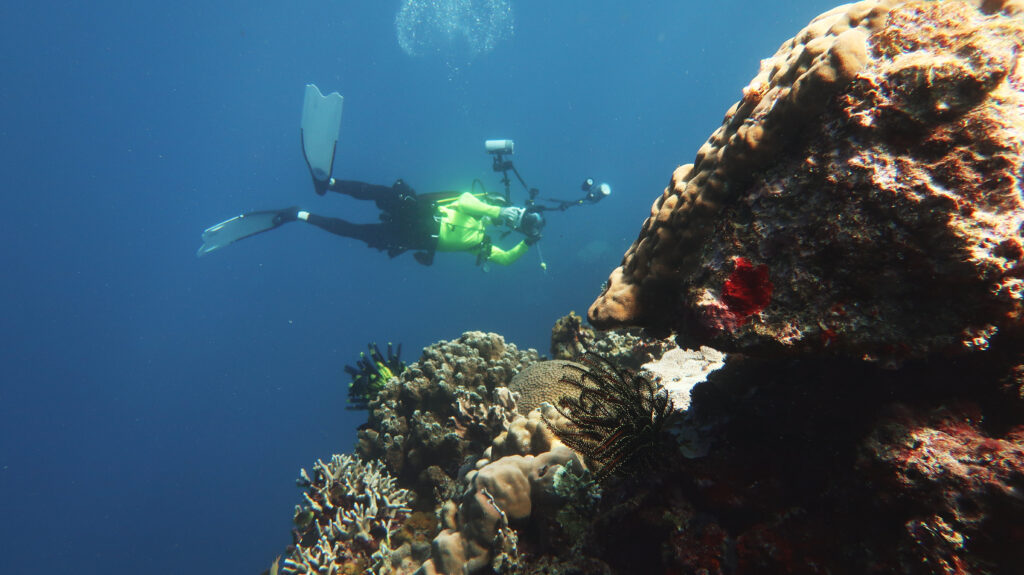
What does it take to capture an inspiring underwater photo? Of course, the type of marine life is a huge factor, but real experts know that it’s as much about control, technique and respect for your surroundings. Whilst anyone can take a photo with unsavoury practices such as leaning on the seafloor or manipulating wildlife to ‘pose’ in the same way they’ve seen in the media, it’s a real pro who can take an incredible photo whilst also having excellent dive skills, spacial awareness and knowledge of what may cause that specific animal stress if treated poorly.
As an underwater photographer, you have the tools to educate and inspire others to be environmental ambassadors for our ocean. So before you take your camera gear underwater, it’s important that you understand and follow the best practice guidelines.
Adhering to these 11 tips will help you become a more skilled underwater photographer, take more inspiring photos and ensure your actions don’t harm the marine environment.
Tip #1 Assess the situation before approaching
Just because you saw something it doesn’t mean it is always possible to position yourself and your camera without touching the reef. Always access the situation and environment before going straight into snapping mode. If you can’t take a photo without being in contact with the reef or scaring the animal, then don’t. If everyone chose to take the photo then, there would be nothing left for others to enjoy. No photo is worth harming the animals for.

Tip #2 Be mindful of the habitat
Everything is interconnected. For example, if you stir up the sediment and debris, upsetting habitats and covering corals, this reduces the ability of the coral to photosynthesise and could cause it to die. Coral reefs are home to many marine species. If they die this would have a knock-on effect on the other organisms that rely on the reef for shelter and food.
Tip #3 Find beauty in your own perspective
It could be tempting to recreate the many beautiful underwater photographs that are seen in the media but do keep in mind that they might not all be photographed ethically. Moving or manipulating marine life and coral in order to get the perfect shot is commonly observed globally — a practice that causes stress to marine life and can erode the ecosystem’s health. Try to capture your subject from a different but natural and environmentally friendly angle. That would get your creative juice going!
Tip #4 Be careful with your torch on night dives
You wouldn’t like it if someone woke you up from your sleep by shining a bright light at you. Same for the sleeping fish! While many marine life are nocturnal, it is still important to be aware of where you shine your torch during the night dive. Make sure you are not disturbing any nocturnal behaviour or waking any marine life.
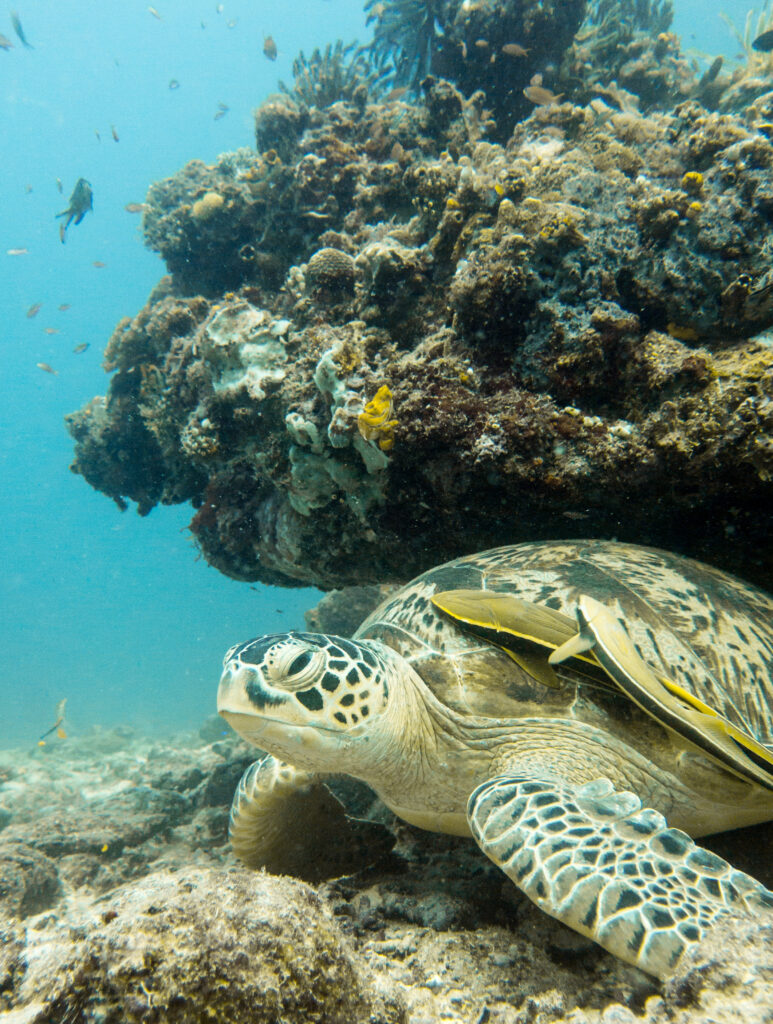
Tip #5 Practise buoyancy control and hovering skills
Mastering buoyancy control can be tricky at the best of times but is even more of a challenge when you’re swimming with bulky equipment. Advanced buoyancy skills prevent damage to the marine environment. If possible, practice in a pool or over sandy bottom with your underwater camera setup beforehand.
Tip #6 Be still and patient
When you’re practising underwater photography, patience really pays off. By staying still and waiting calmly, the subject will be more likely to exhibit their natural behaviour and less likely to swim (or scuttle) away. This will give you the best opportunity for a longer, positive encounter for a great shot.
Tip #7 Learn to fin backwards
This is a useful skill for underwater photographers to learn. By learning to fin slowly backwards, you can move away from the reef in a steady movement without the need to push off the reef or take a wide turn.
Tip #8 Don’t take too many shots of an animal
Excessive use of flash or strobe lighting can cause stress to marine life. Always keep flash photography to a minimum. Limit to taking 5 photos with flash per diver and use ambient lighting where possible.
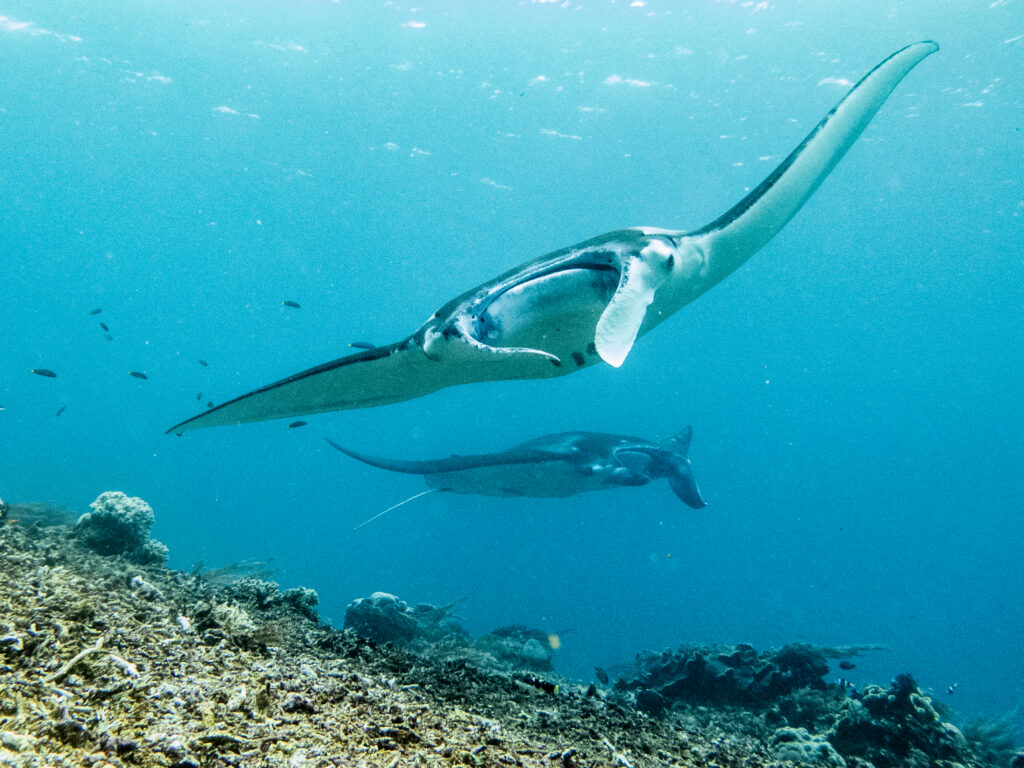
Tip #9 Don’t invade the animal’s space (e.g. cleaning stations)
Stay at a respectful distance from marine life as getting too close will cause your subject to flee. If animals show signs of stress by hiding, changing colours or trying to swim away, take that as a sign to back off and perhaps move on to another subject. Cleaning stations, in particular, are really important areas for an abundance of marine species, so if you calmly wait on the side you will be able to capture some incredible footage.
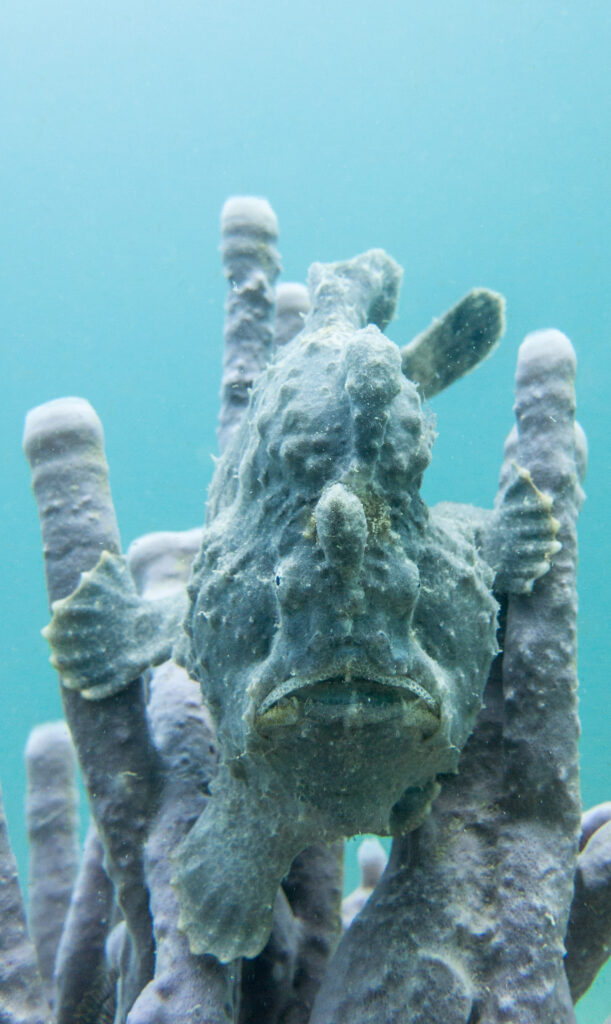
Tip #10 Go with the flow, don’t fixate on one animal
The ocean is a vast and wild place, so it’s not fair to make demands on your guide to see a particular species of animal. Guides may also feel pressured to move and manipulate marine life if they think you will only tip for specific creatures. Go with the flow and you’ll have a better and more enjoyable dive experience. You never know what you’ll come across when you have an open mind.
Tip #11 Tip guides who follow best practice
As established in tip #10, some guides may feel that they’re being asked to manipulate marine life in order for you to get that perfect shot. But this kind of interference with nature can cause stress to wildlife and disrupt natural behaviours. Tipping guides who follow environmental best practices lets them know you appreciate their care for the environment. It’s also a positive gesture that reinforces responsible behaviour.
For more tips on how to take inspiring underwater photos, check out the Green Fins Environmental Best Practice for Underwater Photographers poster and other Green Fins materials on the Action Centre.
Seeing marine life in their natural habitat can be exciting, but do not forget that every time we get into the ocean, we’re still tourists visiting a new destination. As with any traveller, it’s important to respect the locals and the environment that they call home. And in this case, the locals are the marine life. By following environmental best practices for underwater photography, you can capture incredible moments and inspire others to follow in your footsteps.


